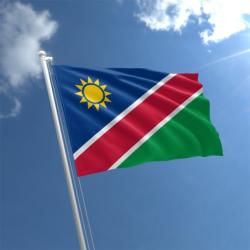
Published date
21 March 1990
Namibia or South West Africa, as it was called while it was a German territory was placed under the South African administration by the League of Nations after the First World War. When the United Nations was established after the Second World War, the South African Prime Minister, General Smuts argued for the incorporation of South West Africa into South Africa as one of its provinces. The request was turned down by UN, however, things changed in 1948 when the National Party came into power. The NP defied and refused to send quarterly reports on Namibia. In addition, the apartheid policies that were implemented in South Africa were extended to Namibia. There were many human rights violations that occurred at the hands of South African Defense Force (SADF) soldiers. One such incident was the Kassinga massacre, a Namibian refugee camp in Angola on 4 May 1978.
The system of government in South Africa led to the formation of the South West African People's Organisation (SWAPO) led by Andimba Toivo ja Toivo. In the 1960s Toivo ja Toivo and others were arrested for defiance against the South African government, and later sent to Robben Island.
In 1988, the South African government, under a UN brokered peace initiative, finally agreed to give up control of Namibia. And on 21 March 1990, Namibia was granted its independence.
References
Erichsen W. Casper, Namibian History, from Namibian.org, [online], Available at: www.namibian.org [Accessed:18March 2014]